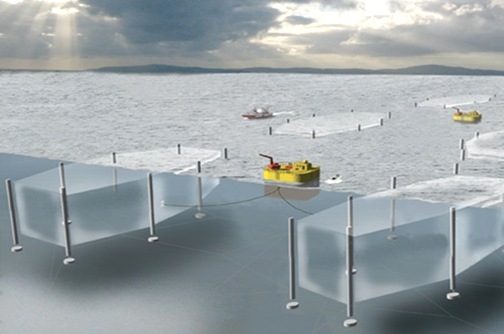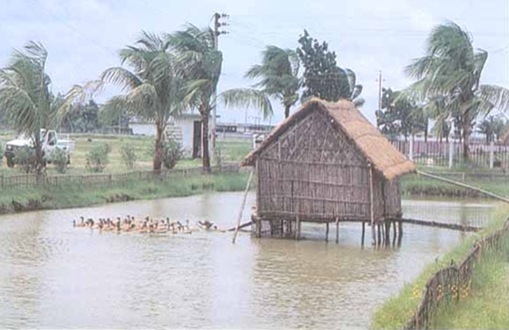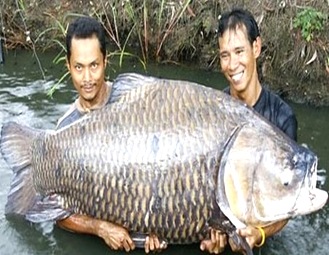Fish Culture and Rearing Methods
FISH CULTURE AND REARING TYPES
Fish culture is of different types viz.,
1. Composite fish culture 2. Cage culture 3. Integrated fish culture 4. Lacustrine fisheries 5. Sewage fisheries
1. Composite Fish Culture
Maximum exploitation of the aquatic resources through the introduction of selected varieties of compatible fish to achieve high productivity is called composite fish culture or polyculture.
Composite fish culture has been in practice in our country since ancient times. The combined efforts of Central Inland Fisheries Research Institute (CIFRI) and Indian Council of Agricultural Research (ICAR) propose the following ratios of different fishes for high yielding in polyculture.
i. Grass carp, silver carp, scale carp and mirror carp in the ratio of 5: 3 : 8 : 2.
ii. Grass carp, silver carp, rohu, scare carp and mirror carp in the ratio of 5 : 3 6 8 : 2.
iii. Grass carp, silver carp, catia, rohu, scale fish and mirror carp in the ratio of 5: 3 3 : 6 8 : 2.
2. Cage culture
In cage culture the fishes are reared in a cage made of Nylon and wooden frame and some times in a cage made up of bamboo mesh. These cages are kept in flowing waste water canals. By this method the fishes can be protected from predators and number of fishes can be culture. Fishes feed.
upon the food available in waste waters. The waste waters can be re utilised for irrigation. The complications in management and investment are very little in this type of culture.

3. Integrated fish culture
Culturing of fish in association with agriculture or ducks or chicks or pigs or prawns is called Integrated fish culture. Fish wastes fertilize the crop fields while wastes from crops and poultry.

chicks are used as feed by fish. individually these farming methods may yield low income. But integrated farming technique yields multiple products of nutritional value and economic importance. Various types of integrated fish culture methods are in practice today. They are
i. Fish-Prawn culture:
Prawn are cultured in ponds which are meant for carp culture in this method. The excreta of carp fishes constitute food for prawns.
ii. Fish-Poultry culture:
In this type poultry farm is constructed over a platform built of bamboo sticks above the water level of the pond. This facilitates direct fertilization of the pond by droppings of chick which are rich in nitrogen and phosphorus.

iii. Rice - Fish culture:
Fish are cultured in rice fields in this method. Fishes which can live in a depth of 15cm are selected for this culture. The rice variety selected for this purpose should also develop strong root system.
iv. Fish culture in pokkali fields:
This practice is followed in kerala. Prawn, fish and rice are cultured on rotational basis in the pokkali rice fields which are influenced by tides of vembanad backwaters. Rice cultivation
is. taken up from June to September. Fish and prawn are cultured upto May.
v. Coconut or Banana - Fish Cuture:
In banana or coconut fields, the ditches or canals in between the rows of plants can be utilised for fish culture in this method. These canals are always filled with water and rich In insect population.

4. Lacustrine fisheries
The culture of fish in takes constitute lacustrine fisheries. Natural lakes of 0.72 million hectares and manmade lakes of 65 million hectares are available for fish culture in India.
5. Sewage fisheries
In many countries fishes are introduced and cultured on commercial basis in sewage canals and ponds. The sewage is used as fertilizer in culture ponds and as feed for fish.
